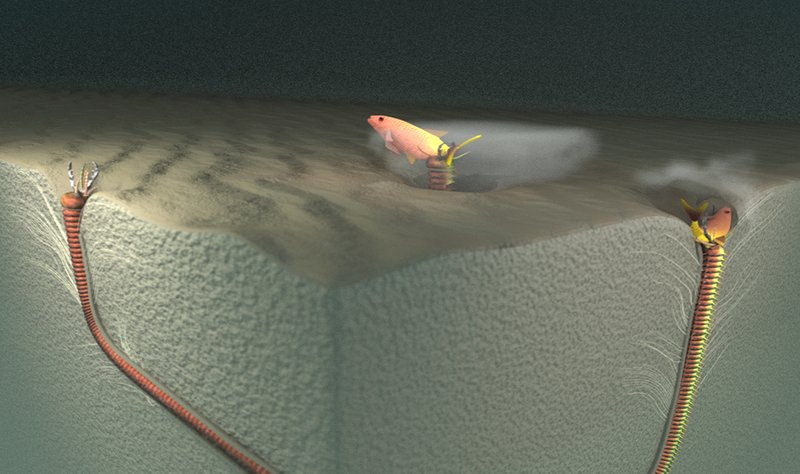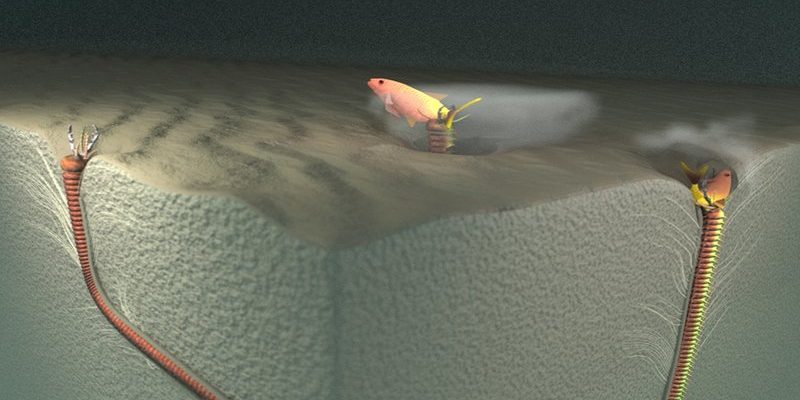
Think of Bobbit worms like hidden treasures in the sand. Their burrows resemble tiny tunnels but can be easy to mix up with other types of holes created by different marine animals. In this blog post, I’ll guide you through how to recognize these holes and what sets them apart from other underwater burrows. So grab a coffee, and let’s dive in!
What Are Bobbit Worms?
Before we get into the nitty-gritty of burrow identification, let’s chat a bit about Bobbit worms themselves. These creatures, scientifically known as *Eunice aphroditois*, are part of the polychaete family. They can grow up to ten feet long, which is pretty impressive for a worm! Their body features a series of bristles or chaetae that help them navigate through sediments and catch prey.
Bobbit worms usually settle in a burrow they create in sandy or muddy sea bottoms. They extend their long bodies out of these holes, waiting for unsuspecting fish or crustaceans to swim by. When their prey comes too close, they strike with lightning speed—hence their nickname, the “Bobbit” worm, which is a bit of a playful reference.
Identifying their burrows can give us insight into where these worms thrive. So, what does a Bobbit worm hole look like?
Recognizing Bobbit Worm Holes
When you’re scouting for Bobbit worm holes, there are a few telltale signs to look for. Generally, those holes are distinct in both size and shape. A typical Bobbit worm burrow is around an inch wide, which is quite noticeable compared to other marine burrows. The mouth of the hole is often clean and circular, which sets it apart from more irregular or messy burrows made by other creatures.
Additionally, if you peer closely at the burrow, you might find some leftover debris or even shed bits of the worm. This can include fragments of shells or other organic material that the worm has consumed. Bobbit worms are known for their carnivorous diet, so any remains can give you a clue.
Here’s a quick checklist to help you recognize a Bobbit worm hole:
- Size: Approximately 1 inch in diameter.
- Shape: Clean, circular entrances.
- Debris: Look for leftover organic material nearby.
- Location: Often found in sandy or muddy sea bottoms.
Comparing Bobbit Worm Holes to Other Marine Burrows
It’s easy to confuse Bobbit worm holes with those made by other marine life. For instance, certain species of clams and other polychaete worms can create similar burrows. These other burrows often differ significantly in size and shape.
For example, clam holes tend to be smaller and may have irregular edges. They often look more like pinholes in the sand. Meanwhile, other types of marine worms may also produce burrows, but those holes can be more complex and branched, resembling a network rather than a single entrance.
Here’s a straightforward comparison:
| Feature | Bobbit Worm Hole | Clam Hole | Other Marine Worm Holes |
| Diameter | ~1 inch | Smaller, often < 0.5 inch | Varies widely; often branched |
| Shape | Circular and clean | Irregular | Complex |
| Debris | Organic remains around the entrance | Little to no debris | Varied organic material, if any |
By keeping these differences in mind, you can become adept at identifying Bobbit worm holes during your explorations.
Common Locations for Bobbit Worm Holes
Now that we’ve covered the characteristics of Bobbit worm holes, let’s talk about where you might find them. Bobbit worms are typically found in tropical and subtropical waters. They’re a fan of sandy or muddy substrates, often located at depths ranging from shallow coastal areas to deeper offshore environments.
You might want to look for these burrows in tidal pools, coral reefs, or muddy bottoms near seagrass beds. These locations provide a rich habitat for them to thrive. If you’re ever snorkeling or diving, keep an eye out for these burrows!
Here’s a quick list of common habitats:
- Tidal pools
- Coral reefs
- Muddy or sandy sea bottoms
- Seagrass beds
Remember, finding a Bobbit worm burrow is like spotting a secret hideout beneath the waves—it’s one of those little surprises that makes ocean adventures all the more exciting!
Why Distinguishing Bobbit Worm Holes Matters
You might be wondering, “Why should I care about distinguishing Bobbit worm holes from other burrows?” Well, understanding the presence of these burrows helps marine biologists and enthusiasts alike learn more about local ecosystems. Bobbit worms are crucial predators in their environment, and their burrows can indicate the health of a marine habitat.
Moreover, if you’re a scuba diver or an aquarist, knowing how to identify these holes can enhance your experience. It allows you to appreciate the complexity of marine life and contribute to conservation efforts by understanding what lives in these areas.
So, every time you spot a burrow, it’s not just a hole; it’s a gateway to understanding the delicate balance of marine ecosystems.
Distinguishing Bobbit worm holes from other burrows is more than just recognizing a hole in the sand; it’s about connecting with the wonders of marine life. By knowing what to look for—size, shape, and surrounding debris—you can appreciate the hidden world of Bobbit worms and their habitats.
Next time you’re near the ocean, keep your eyes peeled. Those little clues in the sand can lead to fascinating discoveries. Whether you’re a casual beachgoer or a dedicated marine enthusiast, understanding these burrows enriches your adventures. So get out there, explore, and enjoy uncovering the mysteries of the underwater world!

